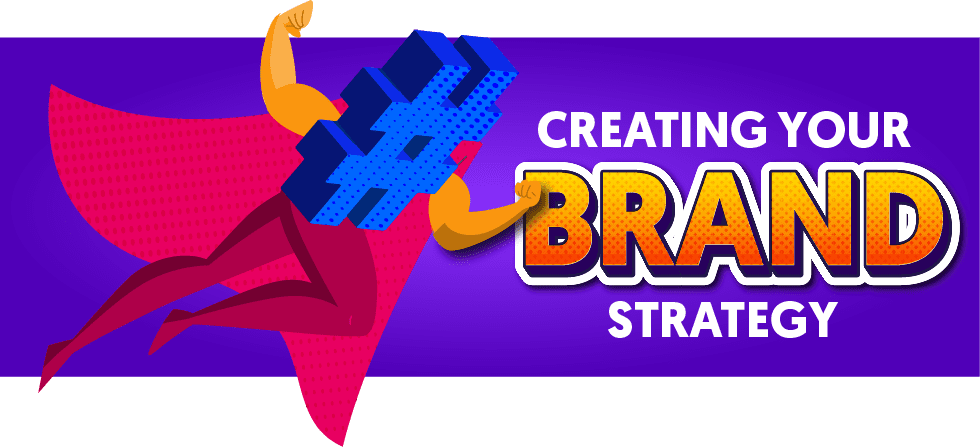- The right hashtag strategy is essential to advertising on social media platforms, organizing content by topic, and helping to form online communities.
- Brands can strategically use hashtags to gain the attention of a larger audience and access new demographics.
- Researching hashtags and understanding the target audience’s interests and online presence is crucial for developing an effective hashtag strategy.
Hashtags were invented as an organizational tool for Twitter. It’s fitting that their first usage was to share information about a 2007 wildfire in San Diego. Since then, the hashtag’s most obvious and powerful application has been to disseminate relief and rescue information during and after natural disasters.
But they weren’t limited to emergency events or one platform for long. They’ve been a standard function on Instagram since it launched in 2010 and Facebook adopted them in 2013. They’ve been ingrained long enough now that it’s easy to forget how integral they are to social platforms’ function: hashtags describe your post to the program so that it can organize all content by topic. Social media would be far less fun and not nearly as user-friendly without that managerial function.
They’re also used to create communities within platforms. Before Twitter launched Communities, users organically discovered each other through common interests used as the topic of their hashtags. Even with the addition of Communities, users often still solely use hashtags to connect with others who share their interests. This practice reveals trends about what’s possible in terms of wielding your hashtag strategy for community response.
Each major social platform has its own version of communities, like Facebook groups and Instagram group chats. After implementing these types of groups, hashtags retain a unique usage. Company social account hashtags as a tool have a clear place at the top of the marketing funnel. They help to gain the attention of a larger audience that may not yet be aware of conversations about your brand on their favorite platform. And if you can successfully get their attention and draw them into that conversation, you can access a new demographic and gain more potential customers.
Regardless of which platform your brand has chosen as a priority, your hashtag strategy plays an important role in your brand’s marketing approach. Let’s take a look at how to build that strategy for your social platform of choice.
Create Your Brand Strategy
Begin with research on hashtags. You can use software to help with this process, but it’s possible (and maybe preferable) to do the research yourself. You can learn a lot by observing whole conversations instead of the highlights identified by social listening tools.
Having a firm grasp of your target audience and where to find them online is key. For example, B2C companies probably don’t need to know much about hashtag strategy for LinkedIn since their customers aren’t on that platform. Regardless of where they are, identifying what’s compelling to your audience is relatively consistent across platforms.
One method is to join groups relevant to your target audience’s interests. If your brand sells sports equipment, for example, see what local beginner recreational leagues are talking about in their social media communities. They probably use the platform to give each other advice, organize events, and recommend equipment to each other. Observing these conversations can help generate keywords and short phrases that have the potential to be successful hashtags.
Some platforms like LinkedIn allow users to follow hashtags so those posts show up in their feeds. The number of users following a hashtag should inform your strategy as well. But as with SEO, it’s usually not worth it to chase the highest number of impressions. Quality is more important than quantity. Sometimes more specific hashtags with fewer followers are more effective. Once you’ve compiled words and phrases that have the potential to be successful hashtags, sort them by types, such as brand, community, niche, and audience or product description. Keeping these organized by category helps you choose the right hashtags for your specific campaign. When you want to speak to brand loyalists, use brand community hashtags; to gain new attention try audience or product description hashtags.
Add Value, Not Noise With Your Hashtag Strategy

Best practices for hashtag usage varies by platform. We’ll look at the correct number and type of hashtag by most popular social platforms with visual components.
- Instagram posts can have up to thirty hashtags per post, but the platform recommends 3-5 hashtags to avoid spamming. You should include hashtags in every post, but try not to re-use the exact same hashtags every time. It may result in penalties.
- Facebook functions very differently. Users don’t follow hashtags on Facebook, but they do search for them. That means that any attention you get from hashtags on Facebook is from users specifically seeking out your content. Facebook doesn’t have guidelines on how many to use per post, so we recommend staying consistent with Instagram’s 3-5 hashtags. The platform does note that popular tags can be very effective, which makes sense if you’re able to keep your post at the top of Facebook’s search results.
- LinkedIn suggests 2-5 hashtags per post as well. Because LinkedIn is a B2B-focused platform, the most successful hashtags relate to specific industries or personal and professional growth.
Optimize and Distribute Content

Developing your hashtag strategy helps brands reach specific and responsive audiences. Your retailers are also on social media with followers of their own local audiences. Branded content goes a long way at the hyperlocal level. Amplify the success of your revamped hashtag strategy by distributing branded content to retailers’ social pages with ThumbStopper. Learn more about what ThumbStopper can do for your brand by booking a demo.